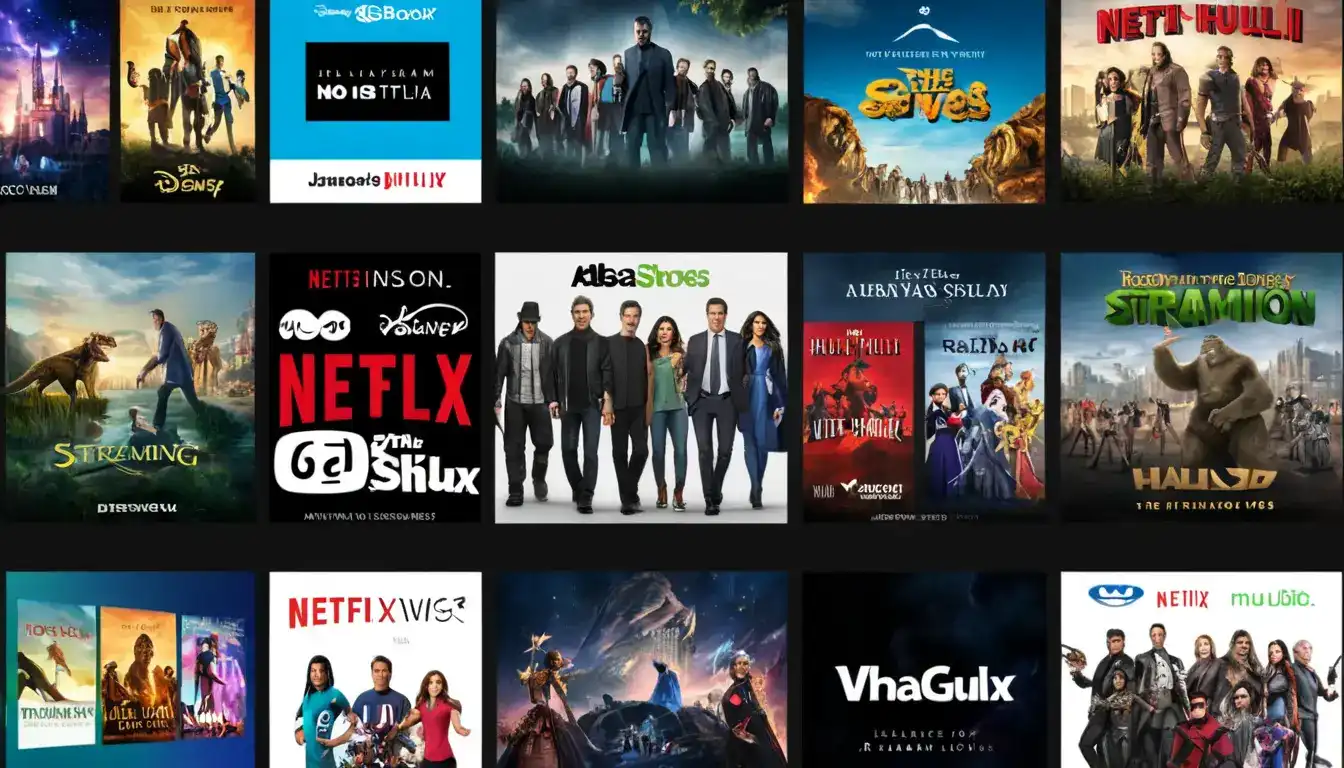How to Create Engaging Content and Convert Visitors to Customers
Emily Willis

Photo: How to Create Engaging Content and Convert Visitors to Customers
In today's digital age, creating compelling content is essential for attracting and retaining customers. But it's not enough to simply produce content; it needs to be engaging, informative, and persuasive to drive conversions. In this guide, we'll explore strategies to create content that captivates your audience and turns visitors into loyal customers.
Understanding Your Audience
The foundation of effective content creation lies in understanding your target audience. By deeply understanding their needs, preferences, and pain points, you can tailor your content to resonate with them on a personal level.
- Create detailed buyer personas: Develop fictional representations of your ideal customers to understand their demographics, behaviors, and goals.
- Conduct thorough market research: Gather insights into your audience's preferences, challenges, and online behavior.
- Utilize customer feedback: Pay attention to customer reviews, surveys, and social media interactions for valuable insights.
Identifying Your Content Goals
Before diving into content creation, define clear objectives for your content. What do you want to achieve? Are you aiming to increase brand awareness, generate leads, educate your audience, or drive sales? Having well-defined goals will help you focus your efforts and measure success.
Creating High-Quality Content
Content is the cornerstone of any successful digital marketing strategy. To create content that truly engages your audience, focus on the following:
- Relevance: Create content that directly addresses your audience's needs, interests, and pain points.
- Value: Provide valuable information, insights, or solutions to your audience's problems.
- Originality: Offer fresh perspectives and unique insights that differentiate your content from competitors.
- Visual appeal: Use high-quality images, videos, and infographics to enhance your content's visual appeal.
- SEO optimization: Incorporate relevant keywords to improve search engine visibility.
- Call to action (CTA): Include clear and compelling CTAs to guide your audience towards desired actions.
Storytelling and Emotional Connection
People are drawn to stories. By incorporating storytelling elements into your content, you can create an emotional connection with your audience and make your message more memorable.
- Identify your brand story: Develop a compelling narrative about your brand's mission, values, and journey.
- Use storytelling techniques: Employ storytelling elements like characters, plot, and conflict to engage your audience.
- Evoke emotions: Connect with your audience on an emotional level by appealing to their desires, fears, or aspirations.
Content Formats and Distribution
To reach a wider audience and cater to different preferences, experiment with various content formats.
- Blog posts: Share in-depth information, insights, and opinions on your industry.
- Videos: Create engaging video content to explain complex topics, showcase products, or tell your brand story.
- Infographics: Use visuals to convey complex information in an easy-to-understand format.
- Social media posts: Share short, snappy content on social media platforms.
- Podcasts: Create audio content for listeners on the go.
- Webinars and live streams: Host interactive sessions to engage with your audience in real-time.
Optimizing Content for Conversions
The ultimate goal of content marketing is to convert visitors into customers. To achieve this, focus on the following:
- Clear and compelling CTAs: Use strong and persuasive calls to action to guide visitors towards desired actions.
- Landing page optimization: Create dedicated landing pages for specific campaigns or offers.
- A/B testing: Experiment with different headlines, CTAs, and designs to optimize conversion rates.
- Lead magnets: Offer valuable incentives, such as ebooks or webinars, in exchange for email addresses.
- Personalization: Tailor your content and offers to individual preferences and behaviors.
Measuring and Analyzing Content Performance
To improve your content strategy, it's essential to track and analyze its performance. Use analytics tools to measure key metrics such as:
- Website traffic: Monitor the number of visitors to your website and content pages.
- Engagement metrics: Track likes, shares, comments, and time spent on your content.
- Conversion rates: Measure the percentage of visitors who take desired actions, such as making a purchase or signing up for a newsletter.
- Social media metrics: Analyze social media engagement, reach, and impressions.
By consistently creating high-quality, engaging content, understanding your audience, and optimizing for conversions, you can effectively turn visitors into customers and build a loyal following for your brand.
we explored the fundamental principles of creating engaging content and converting visitors into customers. Now, let's delve into specific strategies and techniques to enhance your content marketing efforts.
1. Know Your Audience's Content Preferences
Understanding your audience's content preferences is crucial for tailoring your content to their interests and consumption habits.
- Content consumption habits: Analyze how your audience consumes content – platforms, formats, and frequency.
- Industry trends: Stay updated on industry trends and emerging content formats to keep your content fresh and relevant.
- Audience feedback: Gather feedback from your audience through surveys, polls, and social media interactions.
2. Craft Compelling Headlines and Titles
Headlines and titles are the first impression your content makes. Make them count by crafting headlines that are:
- Attention-grabbing: Use strong verbs, numbers, and relevant keywords to pique curiosity.
- Informative: Clearly convey the essence of the content to entice readers.
- Actionable: Encourage readers to click or engage with the content.
- Length-appropriate: Optimize headline length for different platforms and search engines.
3. Optimize Content for Search Engines
While creating engaging content is paramount, don't neglect search engine optimization (SEO). Ensure your content is visible to your target audience through search engines.
- Keyword research: Identify relevant keywords that your audience is searching for.
- Keyword placement: Incorporate keywords naturally throughout the content, including titles, headings, and body text.
- Meta descriptions: Write compelling meta descriptions that accurately summarize the content.
- Image optimization: Use relevant keywords in image file names, alt text, and captions.
- Internal linking: Link to related content within your website to improve navigation and distribute link equity.
4. Promote Your Content Effectively
Once you've created great content, don't let it sit unnoticed. Actively promote your content across various channels to reach a wider audience.
- Social media: Share your content on social media platforms relevant to your audience.
- Email marketing: Include your content in email newsletters and campaigns.
- Guest blogging: Contribute guest posts to reputable websites in your industry.
- Content syndication: Distribute your content to relevant content syndication networks.
- Paid advertising: Consider using paid advertising platforms like Google Ads or social media ads to target specific audiences.
5. Analyze and Adapt Your Content Strategy
Content marketing is an ongoing process that requires continuous evaluation and adaptation. Regularly analyze your content's performance to identify what's working and what needs improvement.
- Track key metrics: Monitor website traffic, engagement metrics, conversion rates, and social media metrics.
- A/B testing: Experiment with different headlines, CTAs, content formats, and promotion strategies.
- Audience feedback: Gather feedback from your audience through surveys, polls, and comments.
- Stay updated with trends: Keep abreast of evolving content trends, audience preferences, and search engine algorithms.
6. Build Relationships with Influencers
Influencer marketing can be a powerful tool for reaching a wider audience and building brand credibility.
- Identify relevant influencers: Find influencers who align with your brand values, target audience, and industry expertise.
- Develop authentic partnerships: Establish genuine relationships with influencers, ensuring they believe in your product or service.
- Create collaborative campaigns: Work with influencers to develop creative and engaging campaigns that resonate with their audience.
- Track campaign performance: Monitor influencer engagement, reach, and conversions to measure campaign effectiveness.
- Nurture influencer relationships: Maintain positive relationships with your influencers for ongoing collaborations.
7. Leverage User-Generated Content (UGC)
User-generated content (UGC) is a valuable asset for building trust and credibility with your audience. Encourage your audience to create and share content related to your brand.
- Run UGC campaigns: Create contests, challenges, or social media campaigns that encourage user-generated content.
- Curate and showcase UGC: Feature high-quality UGC on your website, social media channels, and marketing materials.
- Respond to UGC: Engage with your audience by responding to their comments, questions, and feedback.
- Use UGC in your marketing: Incorporate UGC into your marketing campaigns, such as testimonials, social media ads, and email newsletters.
8. Personalize Your Content Experience
Personalization can enhance the user experience and make your content more relevant to individual readers.
- Use customer data: Leverage customer data to personalize content based on demographics, interests, and purchase history.
- Segment your audience: Divide your audience into segments based on shared characteristics to deliver tailored content.
We've delved into strategies for understanding your audience, crafting compelling content, optimizing for search engines, promoting your content effectively, and analyzing your content strategy. Now, let's address additional tips and considerations for achieving sustainable content marketing success
1. Prioritize Mobile-Friendly Content
With a significant portion of website traffic coming from mobile devices, ensuring your content is mobile-friendly is crucial.
- Responsive design: Implement a responsive design that adapts your website and content to different screen sizes and devices.
- Easy-to-read fonts: Use clear and legible fonts that are easy to read on smaller screens.
- Touch-friendly elements: Optimize buttons, links, and other interactive elements for touch-based navigation.
- Fast loading times: Optimize your website and content for faster loading times on mobile devices.
- Mobile-first approach: Consider a mobile-first approach when designing and developing your website and content.
2. Embrace Video Content
Video content is becoming increasingly popular and effective in engaging audiences. Incorporate videos into your content strategy to boost your website's visibility and engagement.
- Create High-Quality Videos: Produce engaging and informative videos that provide value to your audience.
- Optimize Video Titles and Descriptions: Use relevant keywords and phrases in your video titles and descriptions to improve searchability.
- Embed Videos on Your Website: Embed videos on relevant pages of your website to keep users engaged and increase on-page time.
- Promote Videos on Social Media: Share your videos on social media platforms to expand their reach and attract new viewers.
- Consider Video Ads: Utilize video advertising platforms like YouTube Ads to target specific audiences and drive traffic to your website.
3. Optimize Content for Accessibility
Making your content accessible to users with disabilities ensures that everyone can benefit from your information and resources.
- Use clear and concise language: Avoid jargon, complex sentence structures, and overly technical terms.
- Provide alternative text for images: Use descriptive alternative text to convey the content of images to screen readers.
- Create transcripts for videos: Provide transcripts of video content for users who rely on auditory information.
- Use proper color contrast: Ensure sufficient color contrast between text and background to improve readability.
- Optimize for keyboard navigation: Make sure your website and content can be navigated using a keyboard only.
4. Monitor and Respond to Negative Feedback
Negative feedback, while unpleasant, can provide valuable insights for improvement. Address negative comments and reviews promptly and professionally.
- Acknowledge feedback: Thank users for their feedback, even if it's negative.
- Investigate the issue: Thoroughly investigate the cause of the negative feedback.
- Apologize if necessary: If a genuine mistake has been made, offer a sincere apology.
- Take action to resolve the issue: Implement changes or provide solutions to address the negative feedback.
- Learn from the experience: Use negative feedback as an opportunity to identify areas for improvement.
5. Stay Consistent and Patient
Content marketing is a long-term endeavor that requires patience, persistence, and a commitment to continuous improvement. Don't expect immediate results; focus on consistent effort and data-driven optimization.
- Set realistic expectations: Understand that content marketing is an ongoing process and set realistic expectations for growth.
- Track progress regularly: Monitor your website's traffic, rankings, and other SEO metrics to track progress and identify areas for improvement.
- Adapt to algorithm changes: Stay informed about Google algorithm updates and adapt your strategies accordingly.
- Continuous learning: Continuously learn about new SEO trends, techniques, and best practices to stay ahead of the curve.
- Celebrate successes: Acknowledge and celebrate your SEO achievements along the way to maintain motivation and momentum.
Remember, content marketing is not a one-size-fits-all approach. Tailor your strategies to your specific business, industry, and target audience. By implementing these effective content marketing strategies and continuously refining your approach, you can achieve sustainable organic traffic growth, enhance your brand's visibility, and ultimately drive business success.
Latest ✨
View Allvibrant cultures of Mexico, China, and India, highlighting their unique customs, traditions, and ways of life. It emphasizes the importance of immersing oneself in these cultures to connect with the soul of a place and create lasting memories.
Emily Willis
Virtual reality (VR) and augmented reality (AR) are transforming the entertainment industry by offering immersive experiences that blur the lines between the real and virtual worlds. VR completely transports users into computer-generated environments, while AR overlays digital elements onto the real world.
Emily Willis
The Pacific Ocean is home to remote and enchanting islands that offer untouched natural beauty, rich cultures, and unique experiences for adventurous travelers. Tips for exploring these hidden gems include researching your destination, packing light, respecting local culture, exploring responsibly, and staying safe.
Emily Willis
concept of "sports for social good," which uses the power of sports to address social issues and create positive change. It highlights the impact of sports on diversity, gender equality, youth development, community engagement, health, and peacebuilding.
Emily Willis
Business
View All
August 5, 2024
How to Create Engaging Content and Convert Visitors to Customerscreating engaging content to attract and retain customers in the digital age. It provides strategies for understanding the audience, setting content goals, creating high-quality content, using storytelling and emotional connection, and optimizing content for conversions. It also covers content formats and distribution, measuring and analyzing content performance, and building relationships with influencers and user-generated content.
Emily Willis

August 5, 2024
How to Improve Your Leadership Skillsleadership skills in achieving organizational success. It discusses various aspects of leadership, including understanding leadership, identifying leadership styles, developing effective communication skills, building trust and credibility, developing emotional intelligence, delegating tasks effectively, embracing continuous learning, fostering a positive work culture, making tough decisions, developing a growth mindset, and building a strong team.
Emily Willis

August 5, 2024
Master Your Business Financial Plan in 5 Stepssecrets to mastering your business financial plan with five simple steps. Learn how to analyze financial data, set measurable goals, and create a comprehensive strategy for success. Unlock profitability, make confident decisions, and ensure a bright future for your business
Emily Willis
Economy
View AllBest Secured Loans for Debt Consolidation with Low Interest Rates | Compare Top Lenders & Save Money on Monthly Payments
Read MoreThe digital economy is rapidly changing the job market, with trends such as remote work, the gig economy, automation, e-commerce, cybersecurity, digital skills, and changes in traditional industries having significant implications. These trends offer both opportunities and challenges, requiring individuals and organizations to adapt by embracing flexibility, investing in continuous learning, and staying abreast of technological advancements in order to thrive in this evolving landscape.
Read MoreIn today's rapidly changing economic landscape, innovation and resilience are more important than ever. Innovation drives progress and competitiveness by creating new ideas and solutions to meet market needs. Resilience helps businesses withstand shocks and bounce back from setbacks by planning strategically and diversifying resources.
Read MoreEntertainment
View All
August 4, 2024
The Latest Music Trends, Artists Influencing Pop Culture, and How Digital Platforms Facilitate the Distribution of Music GloballyThe music industry is constantly changing due to consumer preferences, technology, and the influence of artists. Digital platforms have revolutionized music creation, distribution, and consumption, leading to genre fusion, the rise of independent artists, and collaborative projects. Influential artists like Billie Eilish, BTS, and Taylor Swift have shaped pop culture globally. Streaming services, social media, and direct-to-fan engagement have transformed music distribution. Digital platforms also promote cultural diversity and inclusivity, expand markets and revenue, and drive technological advancements. The industry is also focusing on sustainability and ethical practices. To succeed in the future, stakeholders must embrace digital transformation and champion inclusivity.
Emily Willis

August 5, 2024
Video Games: Enduring Appeal, Immersive Worlds, and Diverse Genresenduring appeal of video games, highlighting their ability to transport players to fantastical realms, challenge their minds, and foster connections with others. It explores the magic of immersive worlds, the vast array of genres available, and the social power of gaming.
Emily Willis

August 5, 2024
Music Universal Language: Connecting and Inspiring Across CulturesMusic has the power to transcend language barriers and connect people on a deep emotional level. It serves as a bridge between cultures, fostering understanding and appreciation for diversity. The universality of rhythm and melody creates a sense of unity, while the diversity of musical styles allows for exploration and creativity.
Emily Willis
Health
View AllRegular exercise is essential for maintaining both physical and mental health. It helps with weight management, cardiovascular health, muscle strength, energy levels, and sleep quality. Exercise also reduces stress and anxiety, improves mood, cognitive function, and self-esteem, and lowers the risk of depression. Different types of exercises, such as aerobic, strength training, flexibility, balance, and mind-body exercises, contribute to overall health. To start and maintain an exercise routine, it is important to start slowly, set realistic goals, find enjoyable activities, stay consistent, and listen to your body.
Emily Willis
Regular physical activity is crucial for maintaining long-term health and well-being. It has numerous benefits, including improving cardiovascular health, aiding in weight management, enhancing mental health, strengthening bones, boosting immune function, and promoting longevity.
Emily Willis
Quality sleep is essential for overall health and well-being, impacting physical, cognitive and emotional functioning. Lack of quality sleep can lead to a variety of health issues, including weakened immune function, heart problems, weight gain and cognitive impairment.
Emily Willis
Trending 🔥
View All
1
3
4
5
6
7
8
9
10
Lifestyle
View AllTechnology
View All
August 5, 2024
Top Unity Software Development Trends to Watch in 2024
Explore the top Unity software development trends that will shape the gaming industry in 2024. From AI integration to VR/AR immersion, cross-platform reach, cloud collaboration, and mobile gaming, Unity is revolutionizing gaming experiences. Stay ahead in the dynamic world of game development with these insights.

August 5, 2024
Top 10 Steam Games of 2024
Discover the 10 best Steam games of 2024 and embark on an unforgettable adventure. From breathtaking open-world epics to thrilling FPS battles, these must-play games will keep you entertained for hours. Get ready to dive into the exciting world of Steam gaming and discover your next favorite game!

August 5, 2024
Application of IoT in Various Industries
The Internet of Things (IoT) has revolutionized various industries by enabling real-time data collection, analysis, and automation. In manufacturing, IoT has led to smart factories, predictive maintenance, and supply chain optimization. In healthcare, IoT has facilitated remote patient monitoring, smart hospitals, and enhanced patient care.

August 5, 2024
Oculus Quest 2 vs HTC Vive Pro – Which Should You Choose?
Oculus Quest 2 vs HTC Vive Pro – which VR headset reigns supreme? Dive into this ultimate showdown to discover the strengths and weaknesses of each, and decide which one is worth your investment. From specs and comfort to content and price, we'll help you make an informed choice.





















